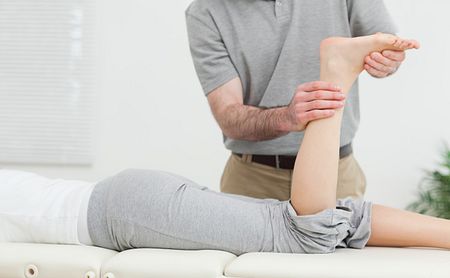Posture Exercises May Improve Joint Health in Children

Exercises to control posture could improve joint health in children with hemophilia and should form part of regular rehabilitation programs, a study suggests.
The balance disturbances uncovered in the study could provide early signs of musculoskeletal disorders that could be prevented or reduced through prompt diagnosis and therapy, researchers said.
The study, “Static postural balance evaluation and an investigation of the relationship with joint health in children with severe haemophilia: a controlled cross‐sectional study,” was published in the journal Haemophilia.
Bleeding in the joints likely affects postural balance — or balance while standing — researchers say, contributing to a higher risk of falls and other injuries later in life.
Although standing balance issues occur in both adults and children with hemophilia, how best to measure them and how they relate to joint health — as measured using tools such as the Haemophilia Joint Health Score (HJHS) — remain unclear.
To learn more, researchers from Turkey now analyzed standing balance and movement patterns in 21 boys with hemophilia, between the ages of 6 and 18, alongside 21 healthy peers, who served as controls.
Participants with hemophilia had experienced at least one lower limb joint bleed due to severe hemophilia (HJHS score of at least three), but had not had a major bleed that could affect the musculoskeletal system in at least the two weeks prior to the study. Leg strength did not differ significantly between the groups.
To assess standing balance, the participants stood barefoot on a force platform, which is a stable surface with sensors to measure shifts in weight. The children stood for one minute with their eyes open, looking straight ahead at a point 80 cm (about 2.6 feet) in front of them. Then they stood for one minute with their eyes closed.
The researchers compared each individual’s front-to-back and side-to-side movements and the shifts in weight across the platform.
Children with hemophilia tended to move about more overall than their healthy peers, but especially in their side-to-side, or mediolateral movements.
While children with hemophilia showed more front-to-back sway than healthy children during the eyes-closed portion of the test, their mediolateral movements grew significantly higher during the eyes-open portion.
Additionally, the team found a relationship between a child’s degree of mediolateral displacement and lower limb HJHS scores. This grew from a moderate correlation with the eyes open, to a strong one with the eyes closed.
With leg strength largely equal between the two groups, the researchers hypothesized that recurrent joint bleeds could cause children to rely more on their hip and trunk muscles, which do more to control mediolateral movements than leg muscles. The leg muscles are being used more to maintain front-to-back stability, the investigators theorized.
That could account for the increased side-to-side weight shifts seen among the participants with hemophilia, according to the researchers. Over time, these balance disturbances might contribute to worsening musculoskeletal disorders, making increased mediolateral movements a potential early sign of which physicians should be aware.
An early diagnosis followed by physiotherapy could then help maintain joint health as a patient ages, given the correlation between balance and HJHS score.
“In conclusion,” the investigators wrote, “static postural balance disturbances during bipedal stance reveal the need for balance evaluation in [children with hemophilia].”
“In addition to improving joint health, postural control and balance exercises that increase [mediolateral direction] stability have to be included in their exercise or rehabilitation programme,” they added.






